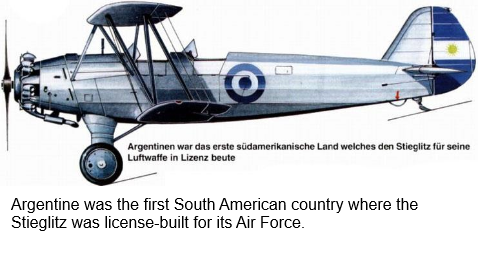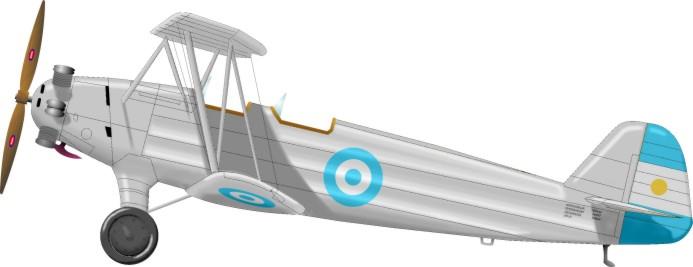The plane of acrobatic pilot Carola Lorenzini. // In the version of the Argentine Air Force, the FW.44J was totally silver, with the following marks of nationality: Argentine flag with sun in both sides of the rudder of the fin unit; Argentine insignia in the fuselage to the height of the endorsement of the pilot cockpit (back seat). The identification number appeared between the insignia and the tail of the airplane. On the left upper wing, insignia; on the superior right, identification number; right inferior insignia, top surface, in left, identification number.

In 1937, Argentina acquired a license to build the Fw 44. Some 190 Fw 44J’s were completed between 1937 and 1942 in the Fabrica Militar de Aviones, located in the province of Córdoba.
Contrary to what many may think, the Argentinean machines turned out to be far superior in quality to the ones built in Germany. The reason for this was lied in the nature of the Córdoba factory. At the time the Argentinean aero industry was in its infancy and the factory worked as a specialist workshop rather than have a production line. The aircraft were built almost entirely handmade, consuming many manhours of work.
While this production method somewhat unexpectedly resulted in high quality of the end product, it was also one of the reasons why the production was finally stopped due to the high cost per aircraft.
In Argentinean service, the aircraft were used for the primary pilot training in the Military Aviation. With time, surplus military machines were transferred to the various air clubs around the country for training of civil pilots.
Many of Argentinean Fw 44s grace the skies even today. The pictures below are showing the Fw 44J, registered LV-IST and LV-YZP, both operated by private owners.


